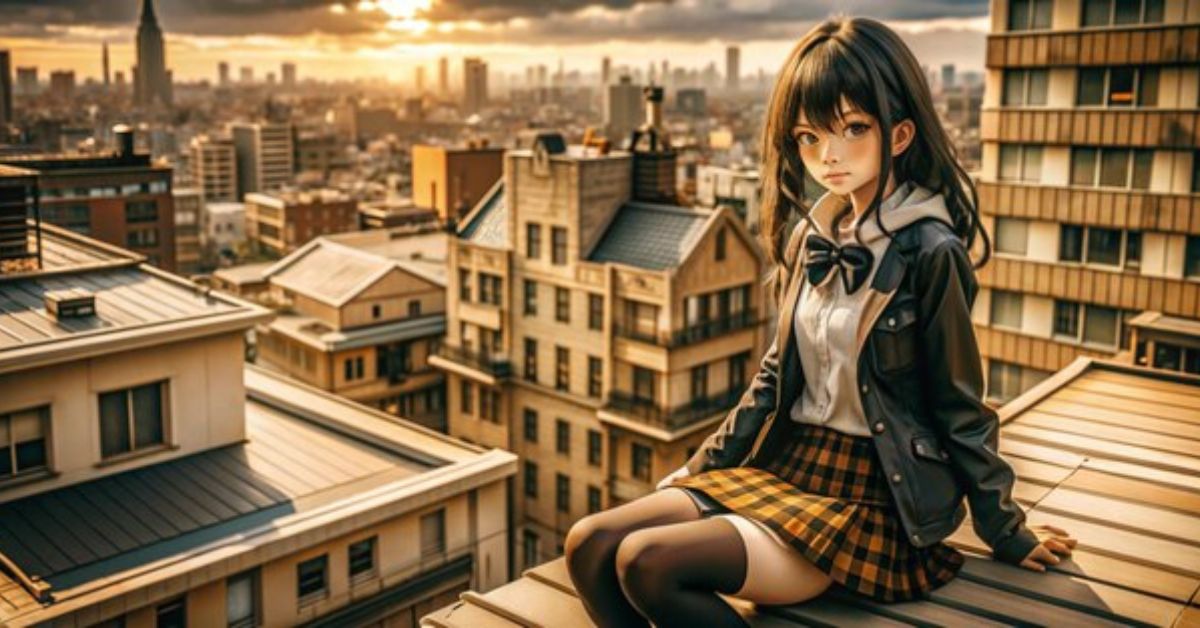Anime girls have become one of the most recognizable and iconic elements of anime culture, captivating audiences with their wide range of personalities, appearances, and roles. These characters are central to the world of anime, often serving as the emotional and visual core of many series. Their distinct style, expressive eyes, and diverse characteristics make them beloved by fans across the globe. From powerful warriors to shy, everyday schoolgirls, anime girls represent a wide array of archetypes, each contributing to the richness of anime storytelling.
This article delves into the phenomenon of anime girls, examining their influence, diversity, and cultural significance. We will explore how they have shaped the global perception of anime, why they are so popular, and the key elements that make them stand out in the world of animation.
The Visual Appeal of Anime Girls
The visual design of anime girls is one of the most striking features that set them apart from characters in other forms of animation. Their large, expressive eyes, often used to convey a wide range of emotions, are perhaps the most defining characteristic. These eyes can reflect joy, sadness, anger, or surprise with just a subtle change in shape or shading, allowing viewers to connect with the character’s emotions on a deeper level.
The unique art style of anime girls also includes stylized hair, which can come in a variety of colors, lengths, and textures. Hair colors in anime are often symbolic and used to express personality traits or character roles. For example, a character with pink hair might be portrayed as bubbly and energetic, while a character with dark blue or black hair might be more reserved or mysterious. These visual cues help viewers instantly understand a character’s personality.
Beyond hair and eyes, the fashion and outfits of anime girls are also a significant part of their appeal. From traditional school uniforms to fantastical battle gear, their clothing often reflects the world they inhabit, adding another layer of depth to their character. Fans often associate these outfits with the characters themselves, making them easily recognizable and memorable.
Archetypes and Roles: Understanding the Diversity of Anime Girls
One reason anime girls are so popular is the diversity of roles and archetypes they represent. Anime is known for its variety of genres, and within these genres, female characters can take on countless forms. Below are some of the most common archetypes found in anime:
The Tsundere
The tsundere character type is one of the most well-known and beloved archetypes in anime. A tsundere is a character who appears cold, harsh, or even hostile on the outside, but has a warm, caring side that is gradually revealed over time. These characters often struggle to express their true feelings, especially when it comes to romance, which creates tension and intrigue for viewers.
One of the reasons tsunderes are so popular is the complexity they bring to a storyline. Their emotional growth and vulnerability add depth to their character, making them more than just a love interest or sidekick. Popular examples include characters like Taiga Aisaka from Toradora! and Rin Tohsaka from Fate/Stay Night, both of whom start off as difficult and stubborn, only to show their softer sides as the story progresses.
The Moe Character
Moe characters are designed to evoke feelings of protectiveness and affection from the audience. They are often portrayed as cute, innocent, and sometimes a bit clumsy, making them endearing to viewers. Moe characters tend to have childlike traits, whether in appearance or personality, and their primary appeal lies in their innocence and charm.
Characters like Madoka Kaname from Puella Magi Madoka Magica or Mikuru Asahina from The Melancholy of Haruhi Suzumiya are classic examples of moe characters. These girls often find themselves in difficult or dangerous situations, which heightens the audience’s emotional attachment to them and fuels the desire to see them succeed or be protected.
The Strong Female Protagonist
In contrast to the moe archetype, many anime feature strong, independent female characters who are capable of fighting their own battles—literally and figuratively. These characters often break traditional gender roles, taking on leadership positions or becoming powerful warriors in their respective worlds.
Examples of strong female protagonists include Mikasa Ackerman from Attack on Titan and Saber from Fate/Stay Night. These characters not only stand out for their physical strength but also for their emotional resilience and determination. They often serve as role models, showing that female characters in anime can be just as powerful, if not more so, than their male counterparts.
Anime Girls and Their Emotional Depth
While anime girls are often celebrated for their outward appearance and charm, their emotional depth is what truly makes them resonate with audiences. Anime often focuses on character development, with many series dedicating significant time to exploring the internal struggles, growth, and relationships of its characters.
Anime girls, in particular, are frequently given complex backstories that shape their actions and motivations. Whether dealing with trauma, personal loss, or the challenges of growing up, these characters are often relatable to viewers. For instance, Homura Akemi from Puella Magi Madoka Magica endures immense suffering and makes difficult choices throughout the series, highlighting themes of sacrifice, love, and perseverance.
This emotional depth makes anime girls more than just one-dimensional figures in a story. They become characters with whom viewers can empathize, offering an emotional connection that strengthens their role in the narrative.
The Role of Anime Girls in Fandom Culture
Anime girls play a pivotal role in anime fandom culture, both in Japan and internationally. Fans celebrate these characters in various ways, from creating fan art to cosplaying their favorite anime girls at conventions. The design and personalities of these characters inspire creativity and devotion from their fanbase.
Cosplay, in particular, has become a popular way for fans to express their love for specific anime girls. Dressing up as characters like Asuka Langley from Neon Genesis Evangelion or Sailor Moon from Sailor Moon allows fans to embody their favorite characters and bring them to life in real-world settings. This form of fan engagement helps to sustain the popularity of these characters long after the anime series has ended.
Moreover, merchandise featuring anime girls—such as figurines, posters, and apparel—is a major part of anime fandom culture. Many fans collect these items as a way to support the shows they love and to keep their favorite characters close. The economic impact of anime girl-centric merchandise is enormous, further cementing their place in the global entertainment industry.
Anime Girls and Their Cultural Impact
The influence of anime girls extends beyond the world of anime and has impacted global pop culture. Their distinct aesthetic has influenced fashion, art, and even video games. Many video game developers have adopted the anime art style, incorporating characters with anime-inspired designs, which has helped spread the popularity of anime girls into other media.
Anime girls have also contributed to Japan’s soft power on the global stage. The worldwide appeal of anime and its characters has introduced countless people to Japanese culture, traditions, and values. Anime conventions, film screenings, and streaming platforms have brought these characters into the homes of fans around the globe, fostering a greater understanding and appreciation of Japanese art and storytelling.
Conclusion
Anime girls are far more than just animated characters. They represent a wide array of personalities, archetypes, and emotional experiences that resonate with fans worldwide. Their visual design, emotional complexity, and role in shaping narratives have made them an essential part of the anime landscape. Whether through their captivating appearances, relatable stories, or iconic roles, anime girls continue to be a powerful force in both anime and global pop culture.
As anime grows in popularity, the influence of anime girls will undoubtedly continue to expand. Their ability to connect with viewers on both a visual and emotional level ensures that they remain a timeless and beloved aspect of anime storytelling.










